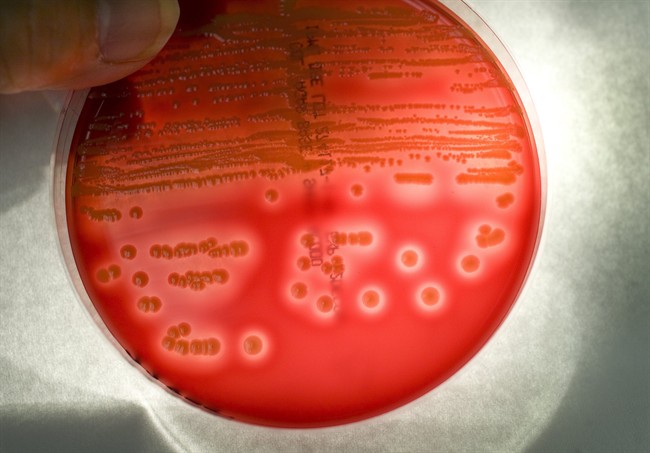According to the World Health Organization (WHO), each year 700,000 people die as a result of antibiotics-resistant bacteria. It’s anticipated that, by 2050, a staggering 10 million people will have died at the hands of these bacteria. It’s numbers like this that worry world leaders, and one of the reasons the WHO approved a declaration on Wednesday aimed at reducing antibiotics use worldwide.

READ MORE: Reduced use of antibiotics does not lead to more complications
Our world is bursting with bacteria. Not all of them are bad, but many are responsible for making us sick and some can be fatal. As medical science improved, we developed ways to save lives with the first antibiotic — penicillin — discovered by Alexander Fleming in 1928. Since then more than 100 different compounds have been discovered, but none since 1987 (there have been modifications to existing antibiotics, however). These antibiotics kill the harmful bacteria and save the human life.
However, bacteria aren’t ready to just lie down and die. They fight back.
“Bacteria are meant through evolution to evolve in order to resist the activity of different chemical compounds, including, among them, antibiotics,” said Dasantila Golemi-Kotra, a professor at York University’s Faculty of Science in Toronto.
“Pretty much all the pathogenic [disease-causing] bacteria have become resistant to antibiotics,” said Golemi-Kotra.
That’s because, just a mere 88 years after its discovery, antibiotics are found everywhere in our world: in the meat we eat, the water we drink, the soil in which we plant. It’s almost impossible to escape.
As well, doctors have been incorrectly prescribing antibiotics to combat things like the common cold or the flu (these are viruses, not bacteria). Some say the doctors have been doing it under pressure from patients to simply give them something, anything to take. But it serves as nothing but a placebo for the patient. For the bacteria, however, it means developing new ways to fight back.
WATCH BELOW: Video shows how bacteria becomes resistant to antibiotics

And then there’s world travel: 20 years ago, antibiotics were considered a local issue. But today, an antibiotic-resistant strain of bacteria can be taken from Toronto to Tokyo in under a day.
The emergence of the “superbug”
There are different ways in which bacteria can develop resistance (called antimicrobial resistance), but one is through something called “cross-talking,” which itself has a couple of methods.
One is by exchanging genetic material. If one bacterial strain is resistant and then exchanges genetic material with another bacterium, you get yet another strain that is antibiotic resistant, something that is referred to as horizontal gene transfer.
Then, there is a recombination of DNA. This is done through bacterial viruses, called phages or bacteriophage. As phages infect bacteria, they pick up bacterial genetic elements and transfer it to another bacterium as they move from one strain to another.
Though almost all pathogenic bacteria are resistant to at least one or two antibiotics, about two to three per cent are resistant to all antibiotics, such as methicillin-resistant Staphylococcus aureus (MRSA).
The fear is that one day these superbugs — impervious to any antibiotics we throw at them — will render us powerless.
“The day we have no solution to bacterial infections will come,” Golemi-Kotra said.
While in the U.S. and Canada antibiotics resistance has been steady, Golemi-Kotra says we can’t control what goes on elsewhere.
“That is the biggest fear,” said Golemi-Kotra. “That is why the WHO is considering this as a global matter. We may be okay in Canada and the U.S., but we can’t control travel, so you can bring these bugs from elsewhere to here.”
Changing the plan of attack
Winning the battle against antibiotic-resistant bacteria may not lie in antibiotics at all. Rather, the attack may have to come from within.
There is developing research that targets modifying the bacterium itself, such as making it less virulent.
In 2015, for example, a study out of Tel Aviv University found that engineered viruses could kill bacteria but also render them susceptible to drugs.
Many other novel ways of battling antibiotic-resistant bacteria are currently being researched and may be the only way we can prevent ourselves from returning to the medical Dark Age.




Comments